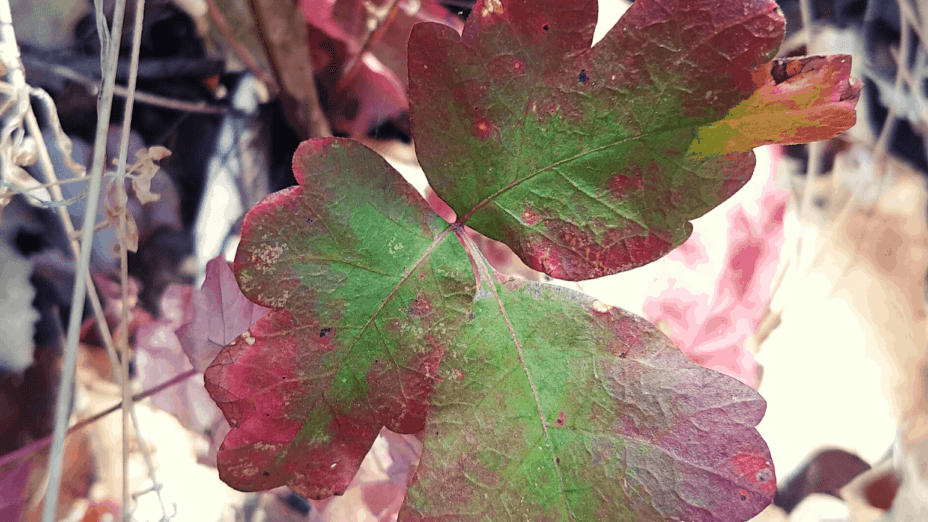
| Common Name | Poison Oak |
|---|---|
| Scientific Name | Toxicodendron diversilobum |
| Plant Family | Anacardiaceae |
| Origin | California Native |
| Duration | Perennial |
| Flower Color | White |
| Plant Type | Vine/Shrub |
| Habitat | Grows in a wide range of habitats, including open woodland, grassy hillsides, dense forests |
| Flower Attributes | Small and yellow-green. Both flowers and seeds hang in clusters |
| Leaf Attributes | Alternate, usually appear in leaflets of three. Leaflets are reddish-green in early spring but turn green in the summer. In the autumn, leaves turn brilliant red or yellow and fall off in the winter. |
Description
Poison oak has two distinct forms: an erect shrub, three to 10 feet tall, and a climbing vine.
All parts of the plant are toxic to humans, causing dermatitis. If you get exposed, wash your skin with soap and water right away to get the plant’s oils off your skin. Some experts say that washing within the first hour may help limit the rash. The rash often shows up in lines or streaks along with blisters or large raised areas. In some people, it causes serious symptoms such as swelling and widespread, large, oozing blisters. Home treatment will often relieve mild symptoms. Prescription medicine may be needed for severe reactions.

